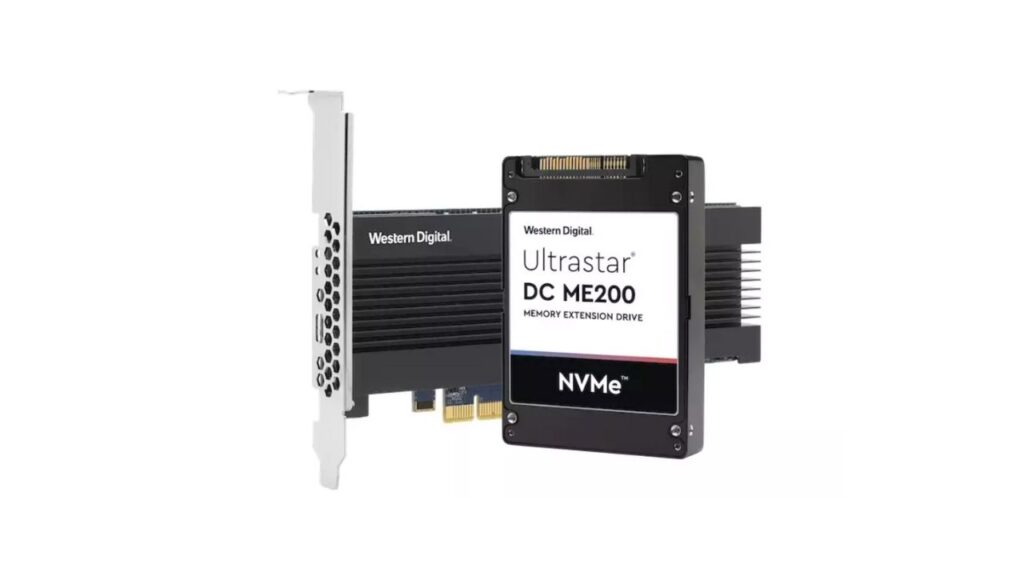The Ultrastar DC ME200 Memory Extension Drive by WD is poised to transform server RAM by leveraging fast flash storage.
While enterprise-grade SSDs capable of handling multiple petabytes of written data may come at a higher cost, they remain significantly more economical on a per-terabyte basis compared to DDR4-SDRAM memory modules.
Western Digital (WD) suggests that, particularly for specific server applications under Linux, NVMe-SSDs from the Ultrastar DC ME200 series can serve as a cost-effective alternative to DRAM.
What is an NVMe SSD?
An NVMe SSD (Non-Volatile Memory Express Solid State Drive) is a type of solid-state drive that uses the NVMe interface to connect to a computer’s motherboard. It is a storage device that is designed to provide high-speed data transfer and low latency, making it significantly faster than traditional storage options like Hard Disk Drives (HDDs) and even SATA-based SSDs.
Wenig Informationen
Moreover, the use of multiple SSDs, each boasting 1, 2, or 4 terabytes, allows for substantially higher capacities than traditional DRAM modules. In dual-socket servers, where 4 terabytes of DRAM is currently the limit, most fall considerably below this threshold.
Despite the promise of accelerated access times through “Software-defined Memory” aided by AI algorithms, detailed information on how the Linux kernel incorporates the flash storage is yet to be revealed, as mentioned by WD Manager Chris Mash in a forthcoming blog post.
Das Datenblatt verrat zudem, dass die “Western Digital Memory Extension” mit den Ultrastar Memory Drives nur unter bestimmten (64-Bit-) Linux-Distributionen funktioniert.
While WD cites examples such as Memcached and Redis as server applications benefiting from Software-Defined Memory, it also suggests that in-memory databases can experience performance enhancements.
Hohe Endurance
Providing early details, WD discloses that the Ultrastar DC ME200 Memory Extension Drive comes in two form factors – PCIe expansion card or U.2 SSD (2.5 inches with 15 mm thickness) – with endurance ratings (Petabytes Written) ranging between 19 and 78, depending on the capacity.
In a different approach, Viking Technology’s “Persistent Memory Drives” VT-PM8 and VT-PM16, announced in May, resemble DDR4-NVDIMMs with a PCI-Express interface in the U.2 SSD form factor.
These drives contain only 8 or 16 gigabytes of DDR4 memory but offer unlimited endurance. In the event of a power outage, an energy buffer takes over until the RAM data is transferred to the built-in flash storage. Upon power restoration, the data flows back, ensuring its availability.
As the Supercomputing SC’18 conference kicks off, Intel is set to present on Optane DC Persistent Memory, a non-volatile (3D XPoint) server memory, prompting activity from other manufacturers like Samsung, which has developed Z-SSDs (Z-NAND).
The Gen-Z Consortium, including HPE and Samsung, aims to revolutionize server architecture. The landscape is evolving rapidly, with innovations like these reshaping the future of server technology.

